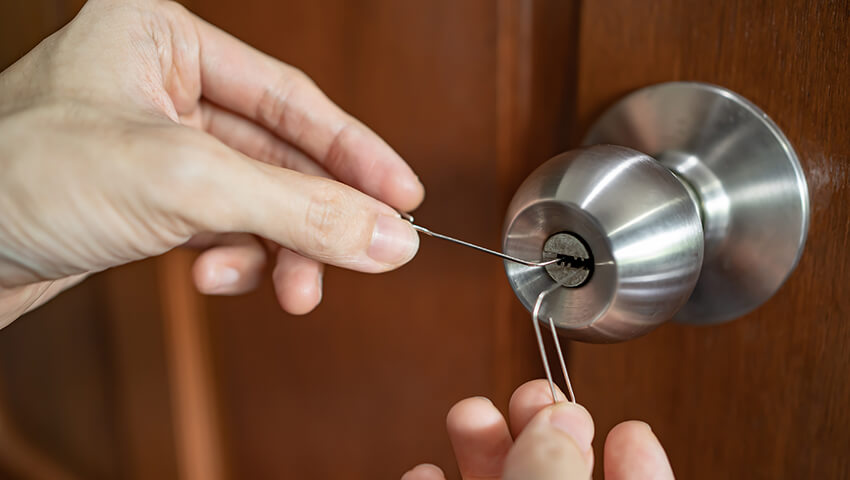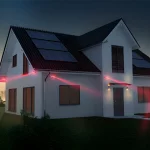| Coming home to find something isn’t quite right can trigger a wave of anxiety. A moved object, an unlocked door, or even a pet acting strangely might raise red flags. While we all hope to never experience a break-in, it’s important to recognize the signs early. Timely detection not only helps you avoid further losses—it also protects your safety and gives law enforcement a better chance to respond effectively.
In this article, we’ll walk you through the key physical, digital, and behavioral signs that your home may have been intruded upon, and what you should do next. We’ll also offer actionable tips to protect your home moving forward.
Sign 1: Physical Signs of Forced Entry
Burglars usually look for quick and discreet ways to gain entry. However, most break-ins leave behind visible evidence. Here are the most common signs:
• Damaged Locks and Handles
A broken or tampered lock is one of the clearest indicators of forced entry. If your door or window locks appear loose, bent, or cracked, someone may have tried to force their way in.
• Scratches, Dents, or Pry Marks
Check around door frames and windows for marks from tools like crowbars or screwdrivers. These are often overlooked but can reveal an attempted (or successful) entry.
• Broken Glass or Screens
Shattered windows, cracked glass doors, or cut window screens are classic signs of a break-in. Even if the window isn’t fully open, any damage to the perimeter should be treated as suspicious.
• Open or Ajar Doors and Windows
If you return to find a door or window left open that you’re sure was closed, it could mean someone gained access and exited hastily.
Sign 2: Unusual Indoor Clues
Not all intruders leave dramatic signs like broken windows. Some prefer stealth and leave behind more subtle evidence:
• Moved or Missing Belongings
Look for items that seem out of place—moved furniture, shifted decor, or valuables that have disappeared. Sometimes, thieves only take small, valuable items like jewelry, cash, or electronics.
• Ransacked Storage Areas
Check drawers, closets, safes, or cabinets. Burglars often rifle through personal items in search of cash or confidential documents. Even a tidy home may have one area that’s been quietly searched.
• Missing Keys or Access Cards
If extra keys, garage remotes, or security cards are gone, the intruder may plan to return. Change all locks immediately.
• Signs of Tampering
If you use safes or locked boxes, look closely. Even failed break-in attempts often leave scratches, warped hinges, or other tamper marks.
Sign 3: Electronic or Technological Indicators
In today’s connected homes, digital clues can be just as important as physical ones. Here’s what to look for:
• Disabled or Offline Cameras and Alarms
If your ZOSI security system or smart alarm shows unexpected downtime, someone may have tampered with it—or cut the power supply.
• Deleted or Missing Footage
If surveillance footage is missing or your camera memory was wiped, that’s a major red flag. Some intruders attempt to cover their tracks digitally.
• New Devices on Your Network
Check your router for unauthorized devices. A smart thief might connect to your Wi-Fi to disable alarms or cameras remotely.
• Unusual Smart Home Activity
Logs from smart locks, door sensors, or lights may show unexpected use during odd hours.
Sign 4: Behavioral Signs from Pets or Neighbors
The people and animals around your home can sometimes spot signs before you do.
• Pets Acting Anxious or Alert
Animals are highly sensitive to unfamiliar sounds and smells. If your pet suddenly refuses to enter a room or acts defensive, it could indicate that something happened while you were away.
• Reports from Neighbors
Always follow up on a neighbor’s report about suspicious individuals, strange vehicles, or unusual noises near your home. Even if you didn’t notice anything yourself, their observations could confirm a break-in.
• Unfamiliar Objects Outside
Sometimes, burglars leave tools, gloves, or even ladders behind. These items near doors or windows may be part of an intrusion attempt.
What to Do If You Suspect a Break-In
If you suspect your home has been intruded—don’t panic, but take the following steps:
Don’t Enter (or Leave Immediately)
If you spot obvious signs of intrusion before entering, stay outside and call the police. If you’re already inside, leave calmly and wait at a safe distance.
Call Law Enforcement
Report the incident immediately. Don’t try to handle it on your own—professionals are trained for this.
Avoid Touching Anything
You might be tempted to check what’s missing, but avoid disturbing the scene. Police may need to collect fingerprints or other forensic evidence.
Review Camera Footage
If you use ZOSI cameras, review your cloud or local recordings for suspicious activity. Screenshots or clips can help authorities build a timeline.
Document Everything
Write down what you noticed, what might be missing, and the approximate time of discovery. This will help with police reports and insurance claims.
Preventive Measures for the Future
Break-ins are a violation of personal space, but you can reduce your risk dramatically with a few smart strategies:
• Strengthen Entry Points
Install solid deadbolts, reinforce doors with strike plates, and consider window security film or bars for vulnerable spots.
• Invest in Smart Security
A reliable security system is one of the most effective ways to deter intruders and protect your home. Modern systems combine high-resolution imaging, intelligent detection, and remote monitoring to give you full awareness and control.
One strong option is the ZOSI C296B 4K PoE PT Camera System. This system includes 4K Ultra HD resolution, smart motion detection for people and vehicles, and pan & tilt and auto tracking functionality—perfect for covering large or vulnerable areas. For best coverage, install cameras at key entry points like the front door, back door, garage, and main pathways.
• Use Lighting Strategically
Well-lit homes are less attractive to intruders. Install motion lights around entrances and dark corners.
• Set Smart Routines
Even when you’re away, use scheduled lighting, video doorbells, and camera alerts to give the appearance of someone being home.
• Check Your System Regularly
Test alarms, update firmware, and replace batteries to ensure your system is always ready.
FAQs
Q1: What’s the first thing I should do if I notice a break-in?
Leave immediately and contact the police. Do not try to confront the intruder or investigate on your own.
Q2: Should I review my security footage before the police arrive?
It’s best to wait unless you’re securely offsite or sharing remote access with authorities. Avoid altering the scene.
Q3: How can I tell if someone tried to break in but didn’t succeed?
Look for scratches near locks, bent screens, disturbed items near windows, or alerts from your security system that were dismissed.
Q4: Will a home security camera prevent break-ins?
While no system can guarantee prevention, visible security cameras—especially smart systems like ZOSI’s—greatly reduce the chance of intrusion and help catch those responsible.
Conclusion
No one wants to imagine a home intrusion, but awareness is your best defense. By knowing what signs to look for—both obvious and subtle—you’ll be prepared to take fast action if the unthinkable happens. And with a reliable security system in place, you’re not just watching over your home—you’re actively protecting it. |





